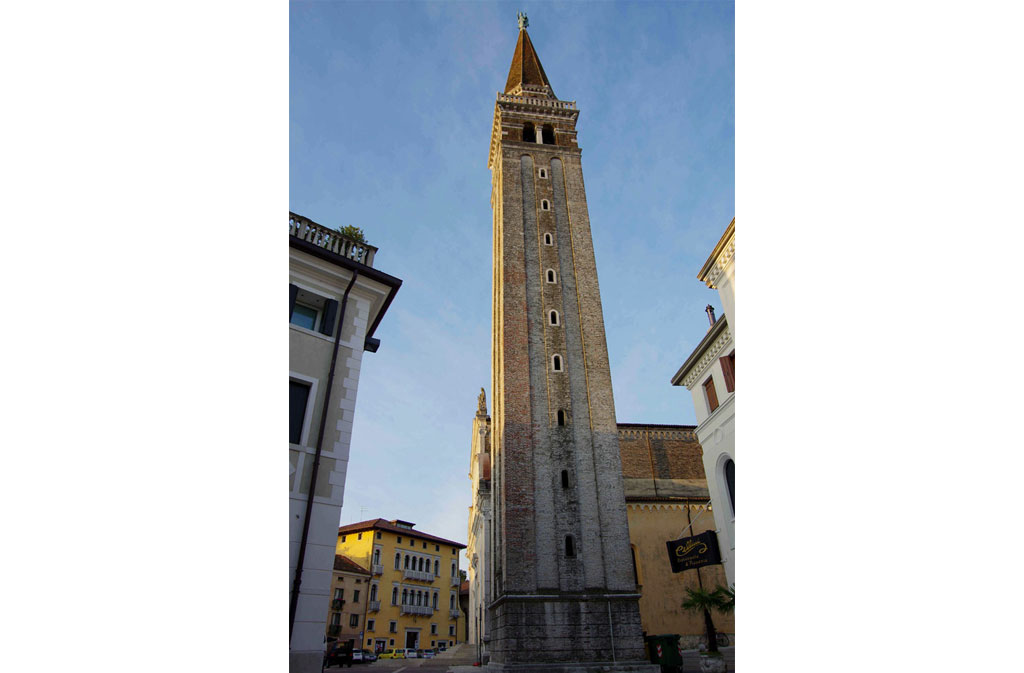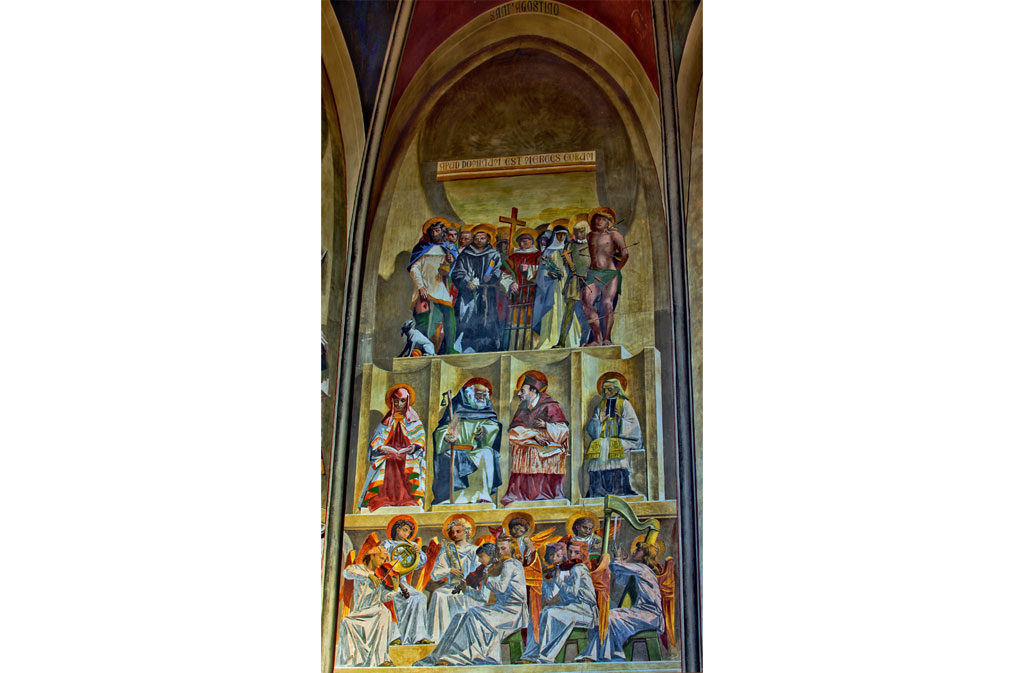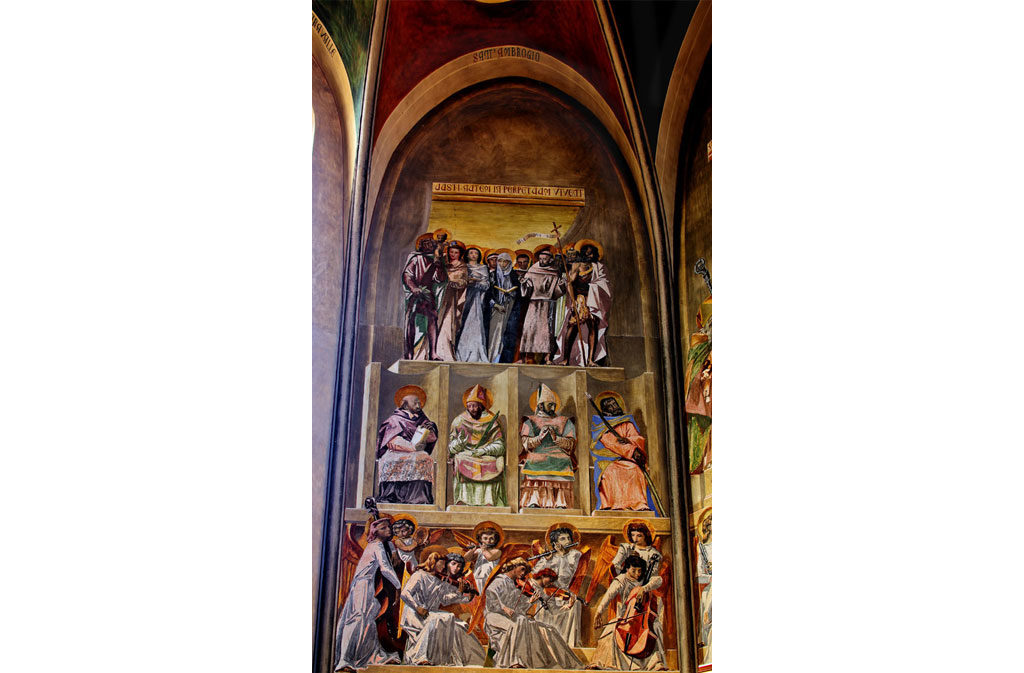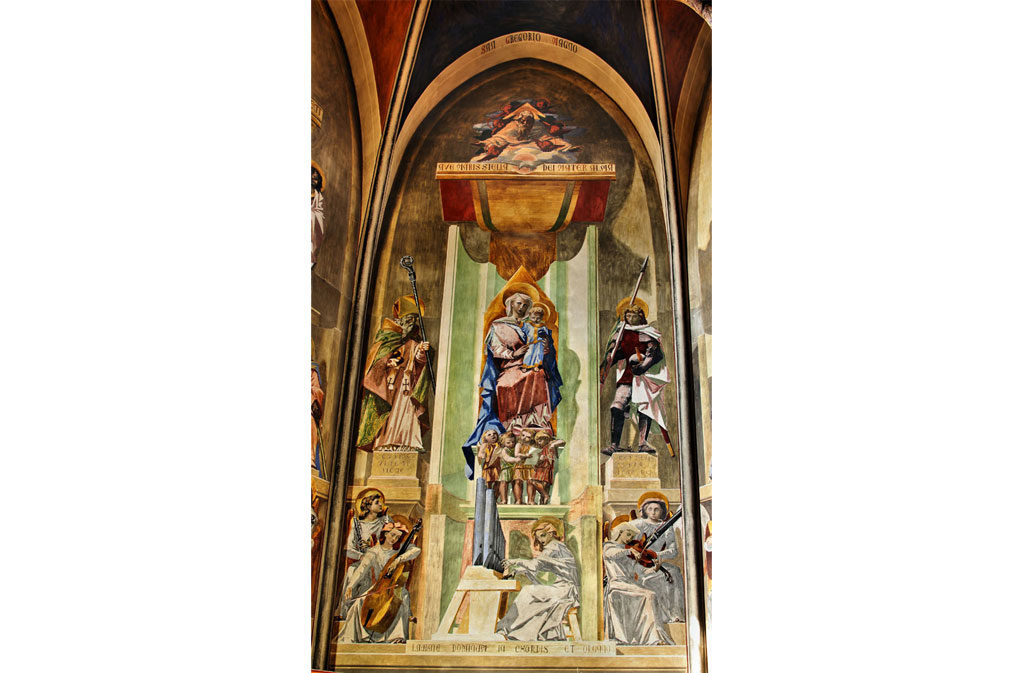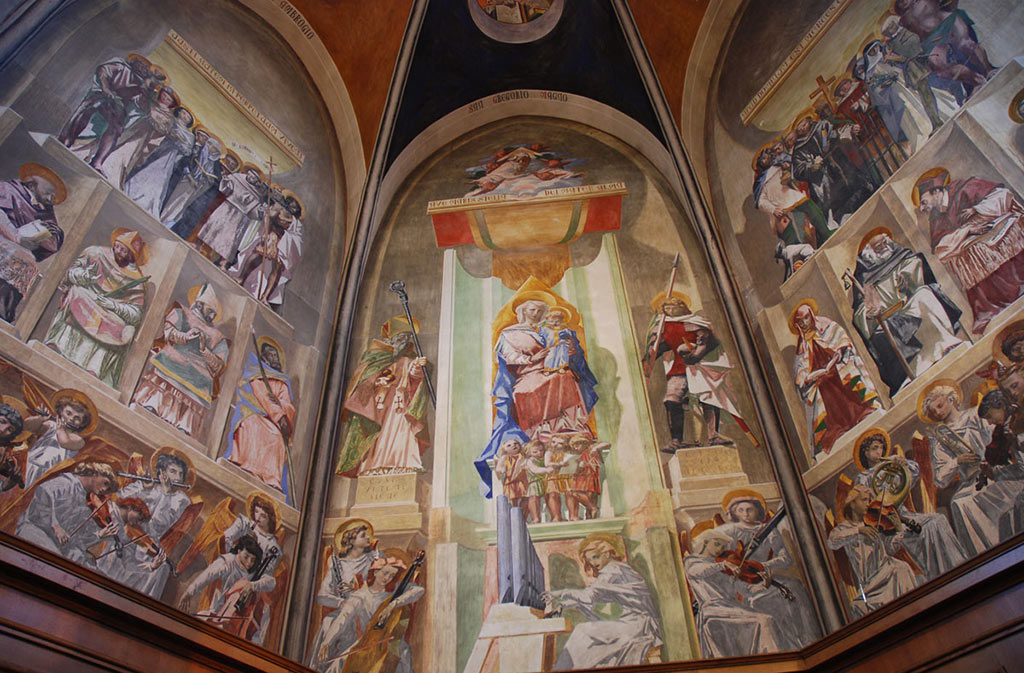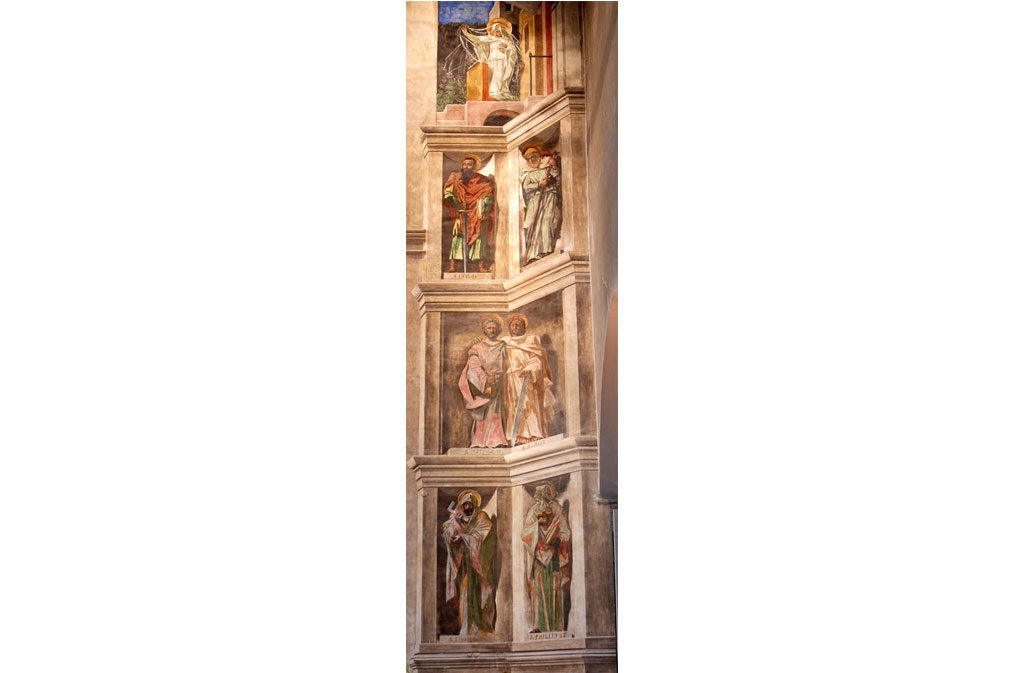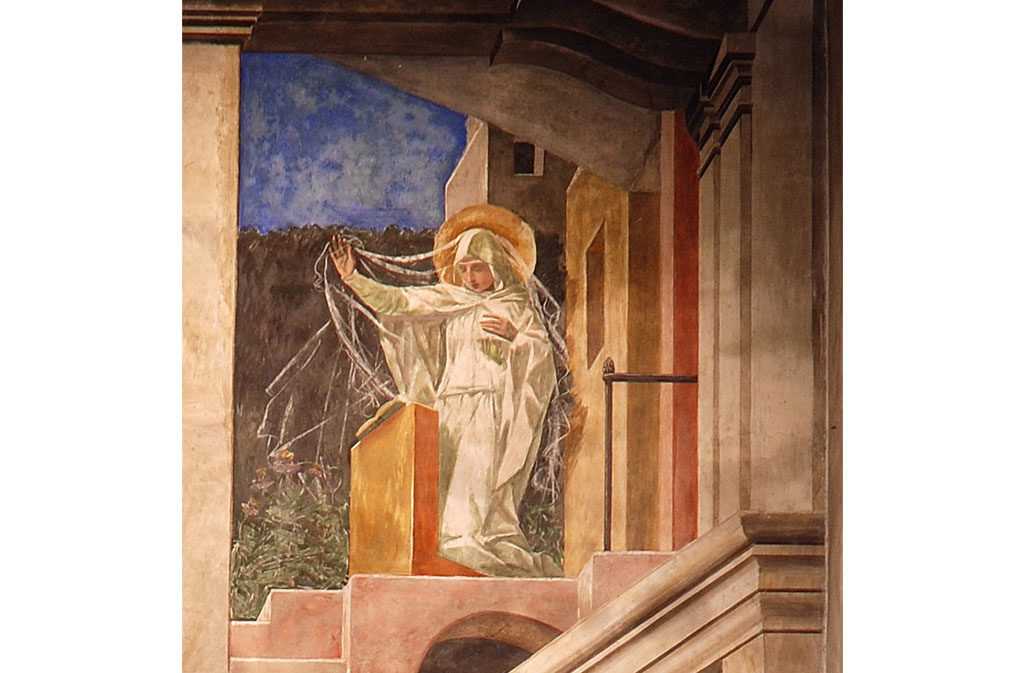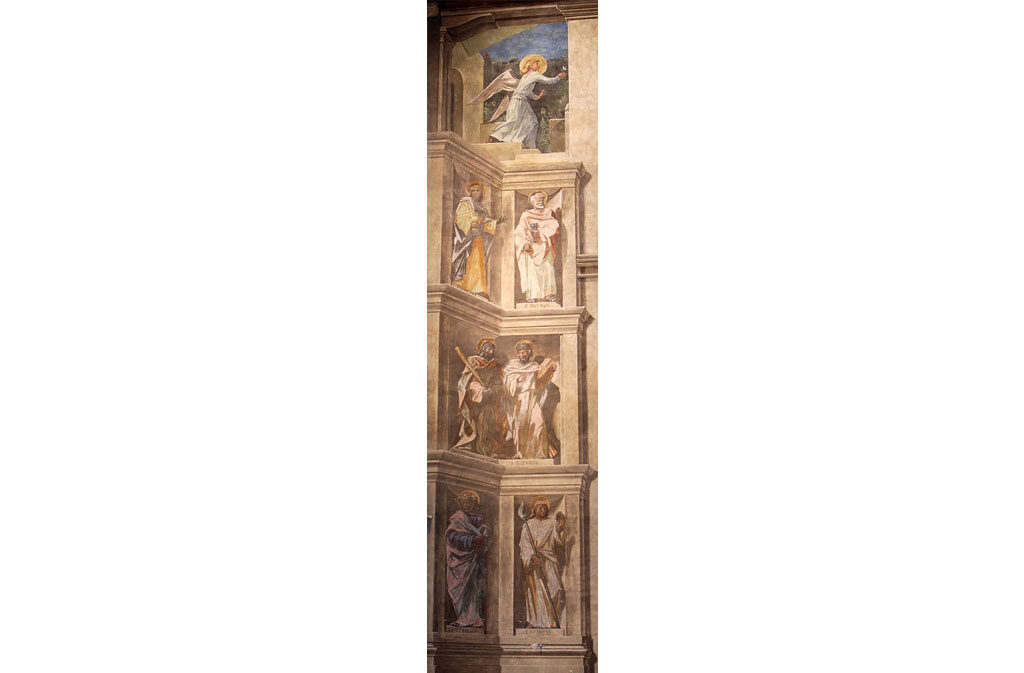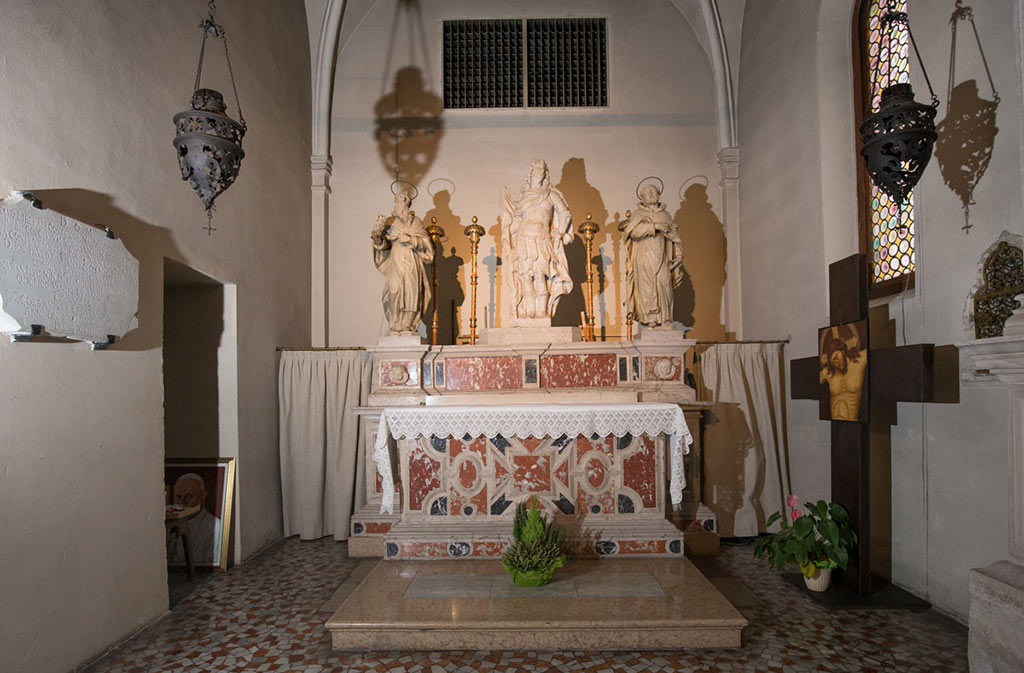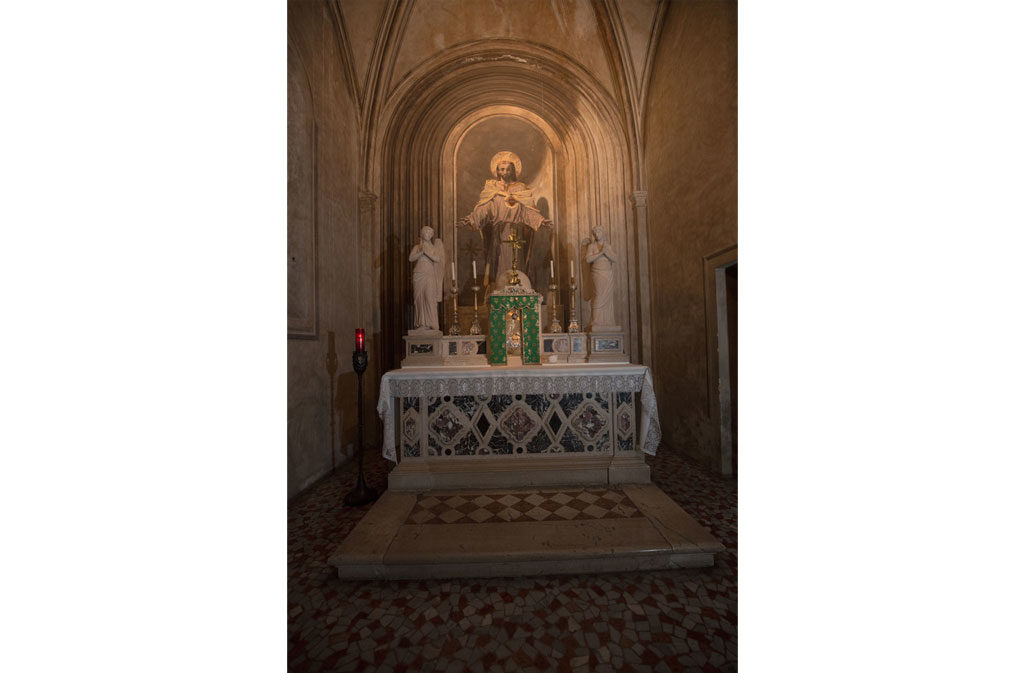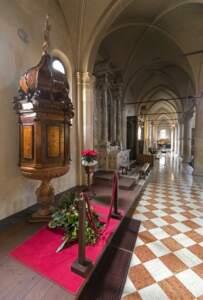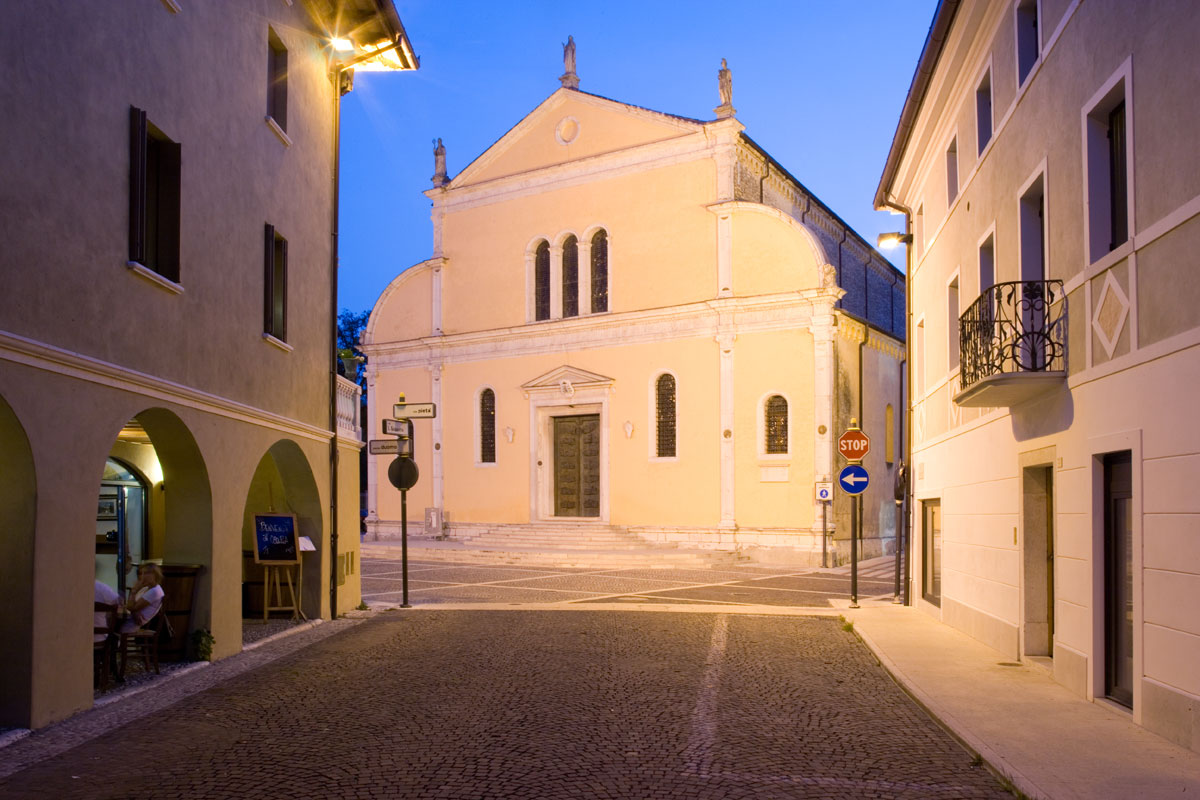A Duke of Friuli, the bend of a river crossing a royal street. In 796, a small shrine was built and a city was born.
For its size and solemnity, Duomo di San Nicolò is certainly one of the most evocative sacred buildings in the region. It stands in the square with the same name, which is actually the ancient “plazuta”, where the medieval tracks converge. In this square Henry, Duke of Friuli, founded the city’s first church. The current building was constructed on the plan of the previous one between 1474 and 1496, under the supervision of Beltrame and Vittorino da Como.
The Renaissance-style façade is well proportioned and divided into three levels by the intersection of vertical pilasters and horizontal beams. Its top houses three stone statues of Saint Nicholas, Madonna and Saint Liberal, which were ascribed to Giuseppe Giordani.
The bronze portal features scenes from the Old and New Testament and was designed and partly crafted by Pino Casarini, who also created the apse’s frescoes. After the artist’s death, the works were completed by Don Luciano Carnessali, priest and artist from Trentino region.
The bell tower stands high above the square, even though recent earthquakes have caused it to lean to one side. Built with bricks in 1568 according to a project by Domenico da Como, it is fifty-two metres high and terminates with an octagonal pinnacle surmounted by a 2.60-metre-high bronze anemoscope angel, standing there from 16th August 1957.


